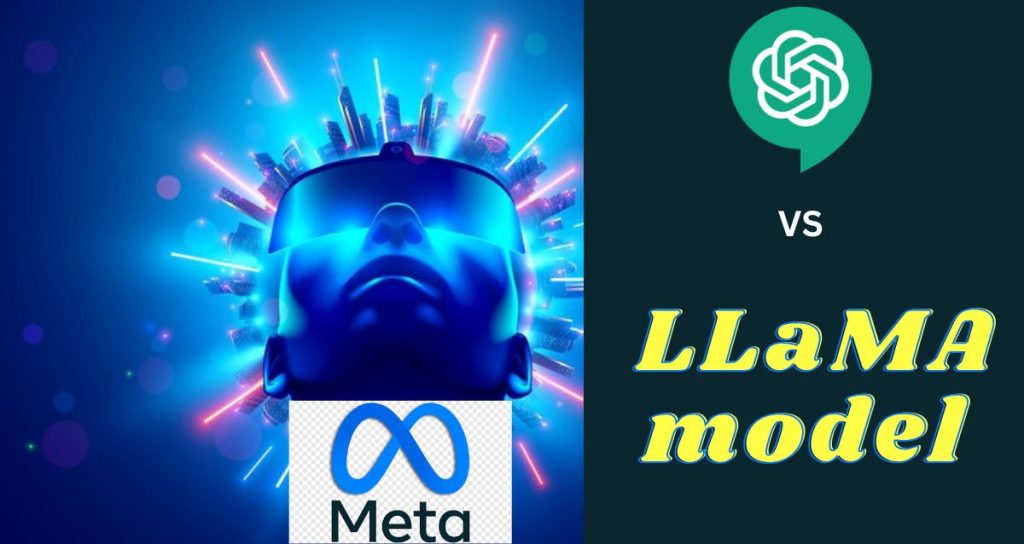On Friday, Meta CEO Mark Zuckerberg announced that the company has trained and will soon release a new large language model to researchers. The model, called LLaMA, was developed by Meta’s Fundamental AI Research (FAIR) team and is intended to support scientists and engineers in discovering applications for AI, such as questions answering and summarizing any documents.
Revolutionize Your Business with AI: Introducing the Powerful LLaMA Model. Discover How Our Cutting-Edge Technology Can Transform Your Operations and Boost Your Bottom Line. Don’t Miss Out – Try LLaMA Today!
Meta’s LLaMA Model: A New Contender in the AI Race
Meta’s release of the LLaMA model comes when large tech companies and startups with significant funding race to integrate advances in artificial intelligence techniques into commercial products. Large language models are the foundation of many popular AI applications, such as OpenAI’s ChatGPT, Microsoft’s Bing AI, and Google’s unreleased Bard.
Meta has stated that it intends to make the LLaMA model available to the AI research community for free. In his announcement about the new model, Mark Zuckerberg wrote, “Meta is committed to this open model of research, and we’ll make our new model available to the AI research community.”
This commitment to openness and accessibility is consistent with Meta’s broader AI research and development approach. The company has emphasized the importance of collaboration and knowledge-sharing in advancing the field. It has made many AI tools and technologies available to the public for free.
One key differentiator of LLaMA is that the model will come in several sizes, ranging from 7 billion parameters to 65 billion parameters. Larger models have successfully expanded AI technology’s capabilities in recent years. Still, they cost more to operate during the “inference” phase, a challenge researchers face. Meta’s LLaMA model could help fuel further innovation in this rapidly-evolving field.
Decoding LLaMA: The Process of Using Large Language Models
The process of decoding large language models like LLaMA involves using the model’s trained parameters to generate text or make predictions based on input data. In the case of LLaMA, the model is designed to be used for a range of natural language processing tasks, such as answering questions, summarizing documents, and generating text.
To use LLaMA for a specific task, researchers or developers would first fine-tune the model on a specific dataset related to that task. Fine-tuning involves adjusting the model’s parameters to better fit the specific characteristics of the dataset and the task at hand. Once the model has been fine-tuned, it can be used to generate text or make predictions based on input data related to that task.
The decoding process itself involves using the fine-tuned model to generate sequences of words or tokens based on the input data. For example, if the input is a question, LLaMA might generate a sequence of words that represents the answer to that question. The quality of the generated text or predictions depends on a range of factors, including the quality of the training data, the size and complexity of the model, and the specific decoding algorithms used
LLaMA vs ChatGPT: Comparing Two Powerful Language Models
It is hard to predict whether LLaMA will become more popular than ChatGPT. Both models have unique features and capabilities that could make them valuable tools for researchers and developers in different ways. One potential advantage of LLaMA is that it is designed to come in several sizes, making it more flexible and adaptable for various use cases. On the other hand, ChatGPT has a larger number of parameters, which could give it an edge in generating more human-like responses in conversational settings.
LLaMA’s Flexibility and Potential
Meta’s release of the LLaMA model represents another significant step forward in the ongoing AI race, as companies seek to leverage these powerful models to create new products and solve complex problems. With its commitment to openness and accessibility, Meta’s LLaMA model could help democratize access to powerful AI tools and promote further innovation in the field. The potential applications of large language models like LLaMA in natural language understanding, question-answering, and text generation make them valuable tools for researchers and developers in various fields.
In conclusion, Meta’s release of the LLaMA model marks an exciting development in the ongoing race to advance AI technology. With its flexibility, potential, and commitment to openness, LLaMA is poised to be a valuable tool for researchers and developers in a range of fields. The model’s multiple sizes and natural language processing capabilities make it an adaptable and powerful solution for a variety of use cases. As companies continue to invest in and explore the possibilities of large language models like LLaMA, we can expect to see further innovation and progress in the field of AI.
Read more about Best Unearthly Technology Of The Future


